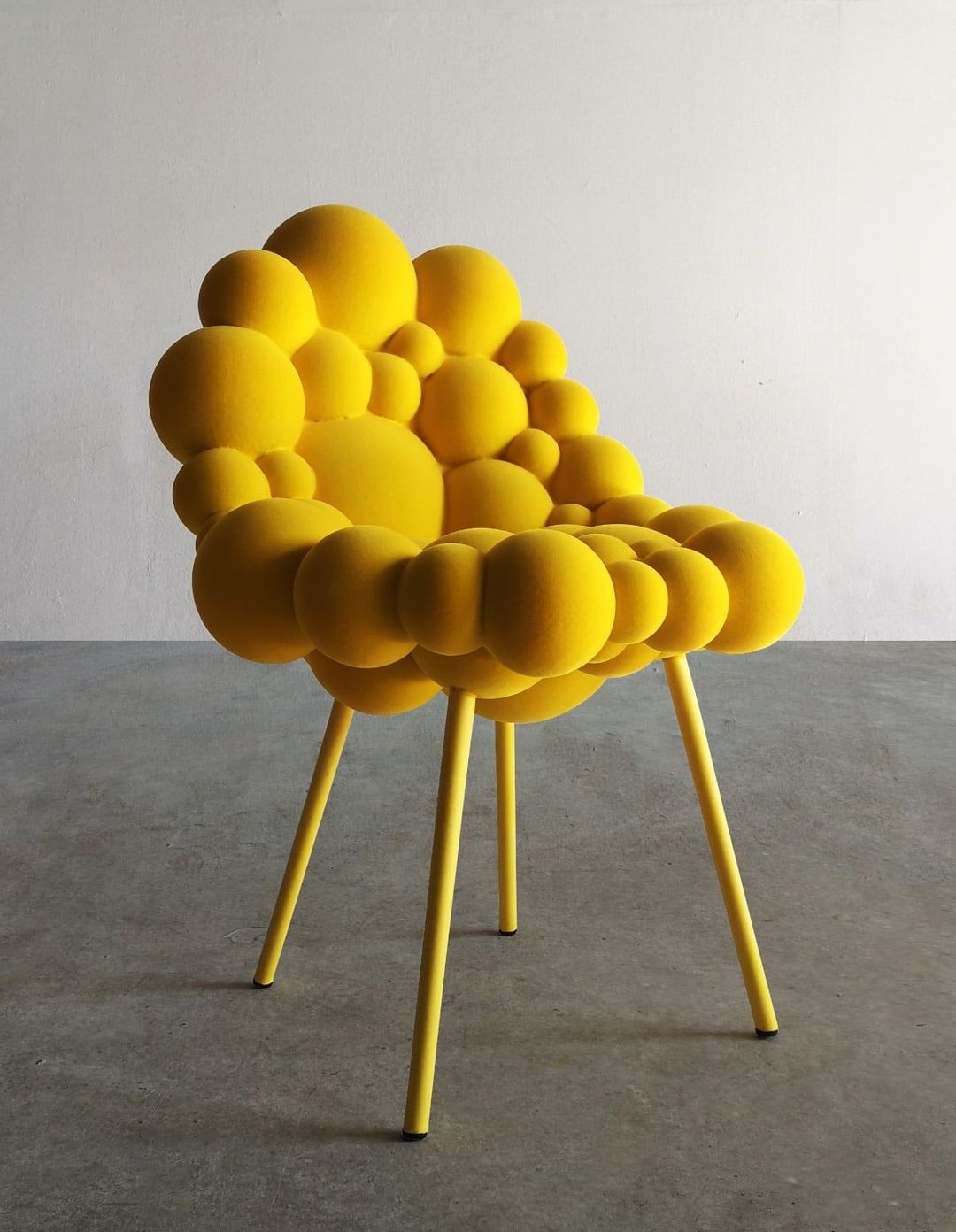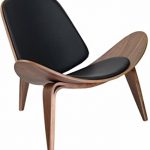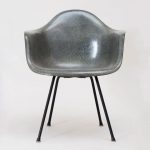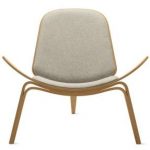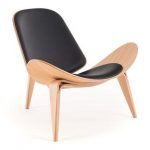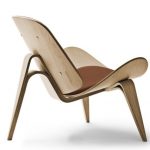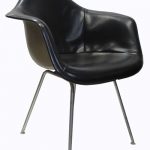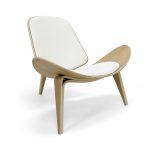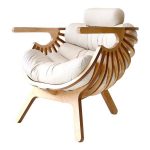The CH07 Lounge Chair, commonly known as the Shell Chair, is perhaps one of the most fascinating furniture designs of the 20th century. Its appeal is definitely not trivial, which is probably why the CH07 chair wasn’t an instant commercial success story. It took almost 35 years for people to properly understand the unconventional shape of this extraordinary chair.
history
The Shell Chair was designed by Hans J. Wegner – a legendary figure of Danish modernism and a famous furniture designer who had a great passion for chairs. hence its nickname “the master of the chair”. Wegner is responsible for more than 500 projects of chairs, many of which were later mass-produced.
Although the first Shell Chair was introduced in 1963, its history dates back to 1948 when Wegner began experimenting with a relatively new (then) method of making plywood. A year later he unveiled a prototype made of bent plywood supported on an unusual three-legged base. In 1963 he revived three-legged chair design by creating the Shell Chair, which made its official debut at a Danish furniture exhibition. Despite the fact that the chair was well received by critics, its avant-garde, futuristic shape made the general public rather reluctant. For this reason, mass production was restricted so that only a small initial batch was for sale.
The Shell Chair was brought back to life by the furniture company Carl Hansen & Son, which brought the CH07 back into production in 1997. The Shell Chair, manufactured under the new brand, immediately experienced a commercial breakthrough. It has also received numerous design awards.
design
The shape of the chair is rather ascetic, but still refined and unusual. Its design embodies the famous credo of its creator, which states: “A chair should not have a rear view. It should be beautiful from all sides and angles. “In fact, the chair, with its famous curves, looks very appealing and futuristic at every angle. The curvy, organic shape of the CH07 was achieved through the use of curved plywood, which was pioneered by Charles Eames. Hence the similarity between the.” Shell Chair and the famous LCW Chair are undeniable.
The bent plywood used for production consists of several layers of oak or walnut veneer, which are then pressed into the desired shape. A seat shell of the chair with its wing-like parabolic shape is a very distinctive feature of the design, which gives the chair its famous smiley look. The tripod base is another notable part of the chair. The front legs are made from one piece of continuous veneer laminate that tapers at both ends. It is similar with the hind leg, which also serves as a support for the backrest. The curves of the forelegs are elongated laterally, next to the curvature of the curved seat pan. This solution is due to the soft, ductile appearance of the stool.
An extremely low center of gravity makes the chair very stable, even though it is only supported on three legs. The backrest of the CH07 is inclined slightly backwards, which indicates a pleasant, relaxing feeling. The seat and back are available upholstered in a variety of fabrics and leathers. Although the chair looks like a masterpiece of modern art, it is fully functional and surprisingly comfortable.
Interesting facts
-
When developing the Shell Chair, Wegner tested various leg configurations with 1: 5 scale models. Finally, the three-legged solution of choice was adopted from his prototype from 1949.
-
To celebrate the 50th anniversary of design, Carl Hansen & Son released two special editions of the Shell Chair in 2013:
The Maharam Project Shell Chair and the Jubilee Shell Chair.
The Maharam Project Shell Chair has been upholstered in a variety of fabrics from the Maharam Textiles Company.
The Jubilee Shell Chair had a seat and back made of oil-treated teak and a frame made of oil-treated oak. it was made the same way in the early 1963 models. The chair has been upholstered with rare and expensive red Niger goat skin, which has a very dense structure, resulting in an extremely strong and durable leather quality.
 decorafit.com Design ideas for your home and patio
decorafit.com Design ideas for your home and patio
